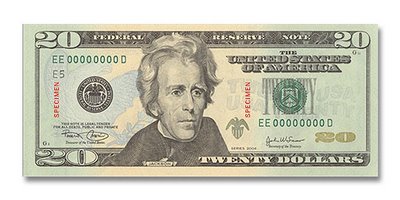Bizarre Teaching Moment #5: I'm Just A Bill, Yes I'm Only A Bill
~It's time for yet another Bizzare Teaching Moment (TM)! This one occurred today in one of my favorite classes. The class consists of two talkative high-school girls who are best friends and say the most far-out things. Today's lesson was on ordering food in a restaurant, so we spent much of the class going over vocabulary for U.S. currency and examining photocopied dollar bills and (real) coins.
 My students were very interested in the symbols and pictures on American money and questioned me about everything. I explained what the words on coins meant and who the person on the front of each coin was. The last one was George Washington, on the quarter.
My students were very interested in the symbols and pictures on American money and questioned me about everything. I explained what the words on coins meant and who the person on the front of each coin was. The last one was George Washington, on the quarter.One of the students then asked me what the bird on the back of the quarter was for, and I told her to guess. She thought about it for a moment, then shouted, "Washington's pet!"
I had to stop the class for a minute to recover from the resulting fit of laughter that nearly rendered me unconscious.
 ^ Seriously, how cool would that be, George Washington with a hungry bald eagle perched on his shoulder as he leads the Continental Army against the British?
^ Seriously, how cool would that be, George Washington with a hungry bald eagle perched on his shoulder as he leads the Continental Army against the British?Actually, Washington did have a pet bird named "Polly the Parrot" (along with 36 hounds and numerous horses). Having a pet parrot, I think, is almost as good as a pet eagle. Perhaps Polly was trained to steal Redcoat hats and spew insults at them in French. Perhaps Polly gave nightmares to Cornwallis, contributing to an erratic British strategy that played a decisive role in America's victory over the British. Perhaps Polly the Parrot is indeed the true avian hero of our nation and deserves to be enshrined on the quarter.
Or perhaps not.
Anyway, the best was yet to come. When we got to the $20 bill, I of course told them that the man on the front was "Jackson". The same student jumped out of her chair, pointed at Jackson's face, and yelled, "Michael Jackson!"
~Oyasumi!



















